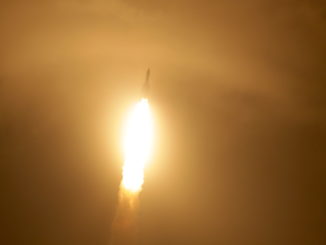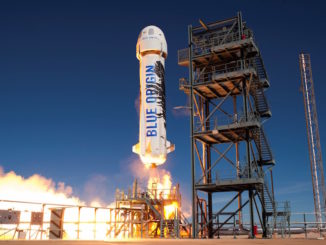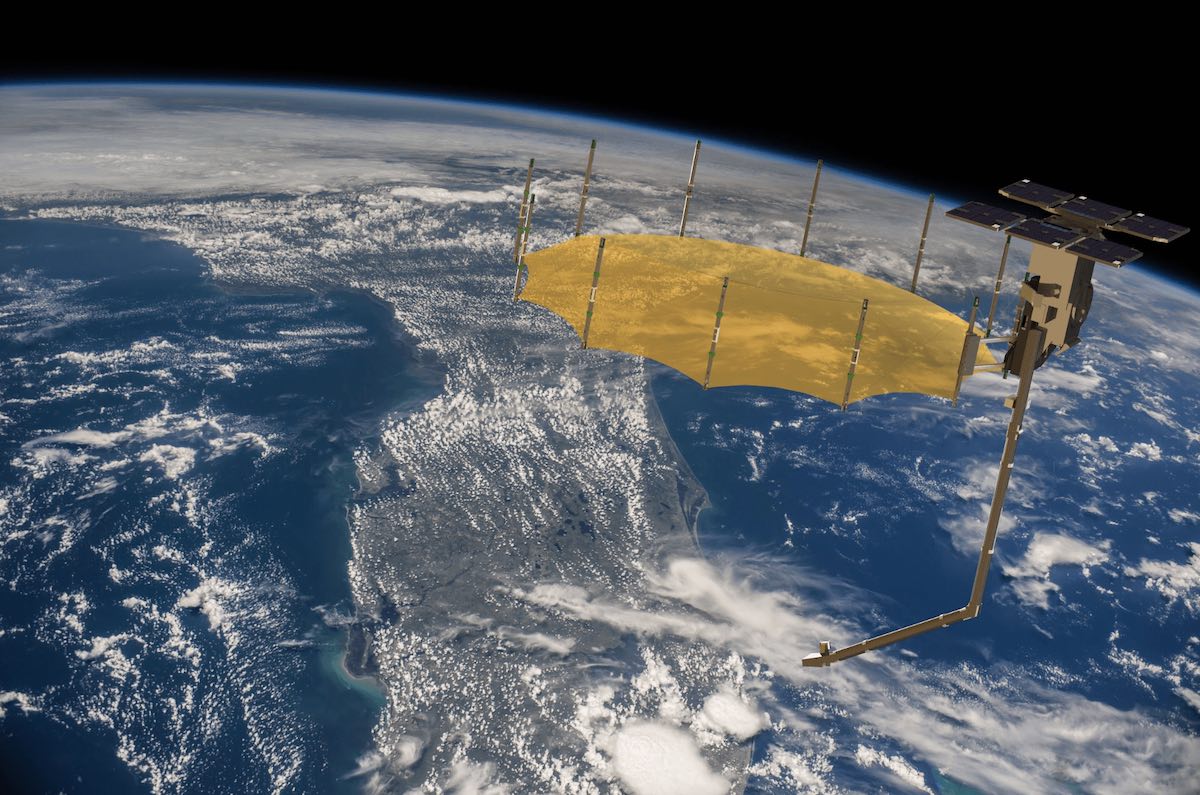
An innovative commercial Capella radar observation spacecraft with night vision and a small payload from the California-based smallsat manufacturer Tyvak are set to ride into orbit from Florida’s Space Coast Saturday with 52 more Starlink internet satellites on a SpaceX Falcon 9 rocket.
SpaceX will attempt to fly its fifth Falcon 9 rocket in 22 days Saturday, following the launch of a Crew Dragon mission April 23 that carried four astronauts to the International Space Station, and three more launches — each with 60 Starlink satellites — from Florida on April 28, May 4, and May 9.
The launch Saturday is set for 6:54 p.m. EDT (2254 GMT) from pad 39A at NASA’s Kennedy Space Center. It will be SpaceX’s 15th Falcon 9 launch so far in 2021, and SpaceX’s 34th Falcon 9 flight since this time last year.
The mission will bring the total number of Starlink internet satellite launched to 1,677 spacecraft, including prototypes and failed platforms that have been decommissioned and deorbited.
An analysis by Jonathan McDowell, an astronomer and respected tracker of spaceflight activity, suggests SpaceX currently has 1,526 working Starlink satellites in orbit, with 886 operational spacecraft, plus hundreds more maneuvering to their final locations in the constellation.
The Starlink network is the largest satellite fleet in history, and SpaceX is adding more spacecraft to expand the constellation to provide global internet service. SpaceX is currently providing interim internet services through the Starlink satellites to consumers in the United States, Canada, the United Kingdom, Germany, and New Zealand.
The company, founded and led by billionaire Elon Musk, announced earlier this month it is expanding the Starlink beta testing program to customers in France and Austria.
SpaceX’s launch Saturday will use a Falcon 9 first stage booster that has flown to space on seven prior missions. The booster — designated B1058 — first launched May 30, 2020, with the inaugural flight of a Crew Dragon capsule with astronauts on-board.
The booster will try to land again Saturday on a SpaceX drone ship positioned several hundred miles northeast of Cape Canaveral. SpaceX said officials are monitoring conditions in the booster recovery zone. Forecasters from the U.S. Space Force say there is a moderate risk of weather in the landing zone violating safe criteria for the booster’s descent.
There is a 70% chance of good weather at the launch site in Florida, the Space Force said. The primary weather concerns for liftoff are with cumulus clouds and ground winds.
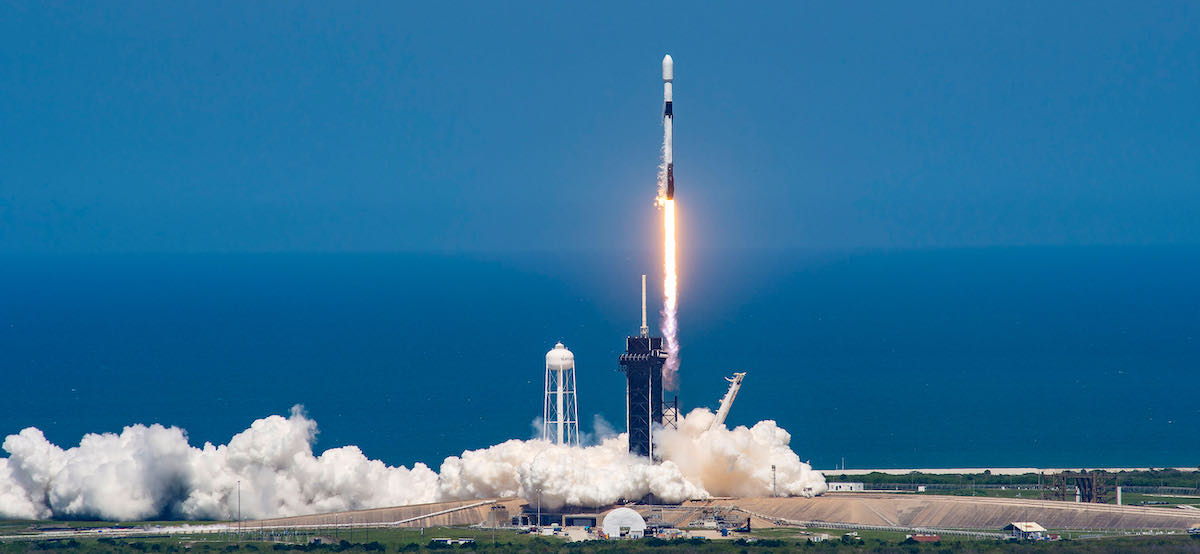
The Falcon 9 launch Saturday is one of two missions ground teams at Cape Canaveral are preparing for launch in the next few days.
United Launch Alliance is set to launch a U.S. military infrared surveillance satellite Monday at 1:35 p.m. EDT (1735 GMT). An Atlas 5 rocket will take off from pad 41 at Cape Canaveral Space Force Station — a few miles south of pad 39A — to boost the satellite into orbit on a mission to detect missile launches that could threaten U.S. and allied military forces.
If SpaceX does not launch its Falcon 9 rocket Saturday, there’s a backup opportunity available on the Space Force’s Eastern Range at 6:33 p.m. EDT (2233 GMT) Sunday. The Atlas 5 could still launch Monday, even if the Falcon 9 launch is delayed a day, officials said.
The launch Saturday will be the 28th Falcon 9 flight with a primary goal of deploying Starlink satellites. It will be the fourth Starlink flight to carry rideshare payloads from other customers.
SpaceX sells capacity on its Starlink missions for small satellites. Engineers can adjust the number of Starlink spacecraft on a given mission to make room for rideshare payloads.
The company has published pricing information for its smallsat rideshare service. According to SpaceX’s website, it charges $1 million to launch a 440-pound (200-kilogram) satellite on a rideshare mission — and less for smaller payloads — significantly lower than published prices from other launch service providers.
Capella Space’s fourth commercial radar imaging satellite will hitch a ride on Saturday’s mission. The spacecraft, with a launch weight of roughly 220 pounds (100 kilograms), will join three other operational Capella radar remote sensing satellites.
One of the Capella satellites lifted off on a Rocket Lab Electron rocket last year, and two more rode a Falcon 9 rocket into a polar sun-synchronous orbit on a dedicated rideshare mission in January. Capella launched an earlier test satellite in 2018.
Based in San Francisco, Capella is one of several companies developing fleets of radar imaging satellites. After launch, Capella’s spacecraft will unfurl its radar reflector antenna to a diameter of about 11.5 feet (3.5 meters) and begin collecting imagery.
Capella already has contracts with the National Reconnaissance Office, the U.S. Air Force, and the U.S. Navy to study military uses of commercial radar satellite imagery. The National Geospatial-Intelligence Agency signed a Cooperative Research and Development Agreement, or CRADA, last year to allow researchers from the U.S. government’s intelligence community to assist Capella.
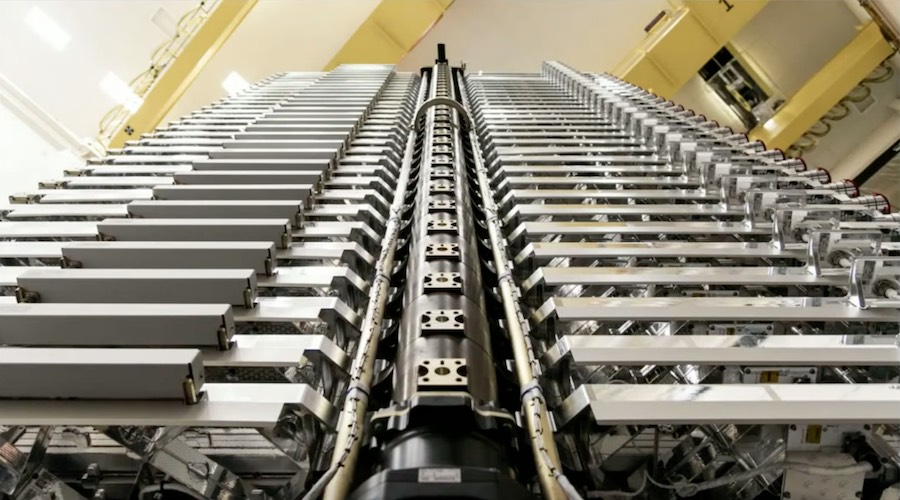
Capella’s planned constellation of small satellites will enable rapid revisit, allowing the company’s orbiting radar observers to collect imagery of the same locations multiple times per day. That will allow government and commercial customers to detect changes in the environment.
Other remote sensing companies have similar business plans.
Planet, another San Francisco-based company, operates a fleet of around 150 small optical Earth observation satellites. BlackSky is also deploying a constellation of optical remote sensing spacecraft.
But Capella’s satellites use synthetic aperture radar technology, allowing imagery collection night and day and in all weather conditions. Optical satellites are limited to observations in daylight and in cloud-free skies.
Capella is initially deploying a fleet of seven radar remote sensing satellites. That could be scaled up given sufficient demand, the company says.
Capella has a license from NOAA, which regulates space-based remote sensing by U.S. companies, for a constellation of 36 small radar surveillance satellites. The company says it also has permission from U.S. regulators to sell high-resolution radar images globally.
Another small satellite named Tyvak 0130 will accompany the Starlink and Capella spacecraft into orbit Saturday.
The satellite was built by Tyvak Nano-Satellite Systems, a small spacecraft manufacturer in Irvine, California. SpaceX did not disclose details about the Tyvak 0130 spacecraft, and Tyvak has not listed the mission on its website.
A regulatory document posted on a NOAA website says the federal agency, which oversees licensing of U.S. remote sensing satellites, granted approval to Tyvak in 2019 to “operate a private, space-based, remote sensing system named Tyvak 0130.”
The document describes Tyvak 0130 as an “optical spectrum astronomy observation satellite.”
SpaceX’s Falcon 9 rocket will head northeast from the Kennedy Space Center on Saturday’s mission. After releasing its first stage two-and-a-half minutes into the flight, the Falcon 9’s upper stage will fire its main engine two times to place the 52 Starlink satellites and two rideshare payloads in a nearly circular orbit with an average altitude of 357 miles (575 kilometers), according to preflight orbit predictions.
The target orbit is inclined 53 degrees to the equator, the same type of orbit used by most of the satellites currently in the Starlink constellation.
The Tyvak 0130 spacecraft will separate from the Falcon 9’s upper stage at T+plus 56 minutes, 53 seconds, followed by deployment of Capella’s satellite at T+plus 60 minutes, 23 seconds.
The 52 Starlink satellites, built by SpaceX in Redmond, Washington, will separate from the rocket about 98 minutes into the mission.
The 573-pound (260-kilogram) flat-panel Starlink satellites will release from the rocket all at once, and begin drifting apart to use their ion thrusters to maneuver into a slightly lower orbit 341 miles (541 kilometers) above Earth, where they will enter operational service in SpaceX’s internet network.
Email the author.
Follow Stephen Clark on Twitter: @StephenClark1.


